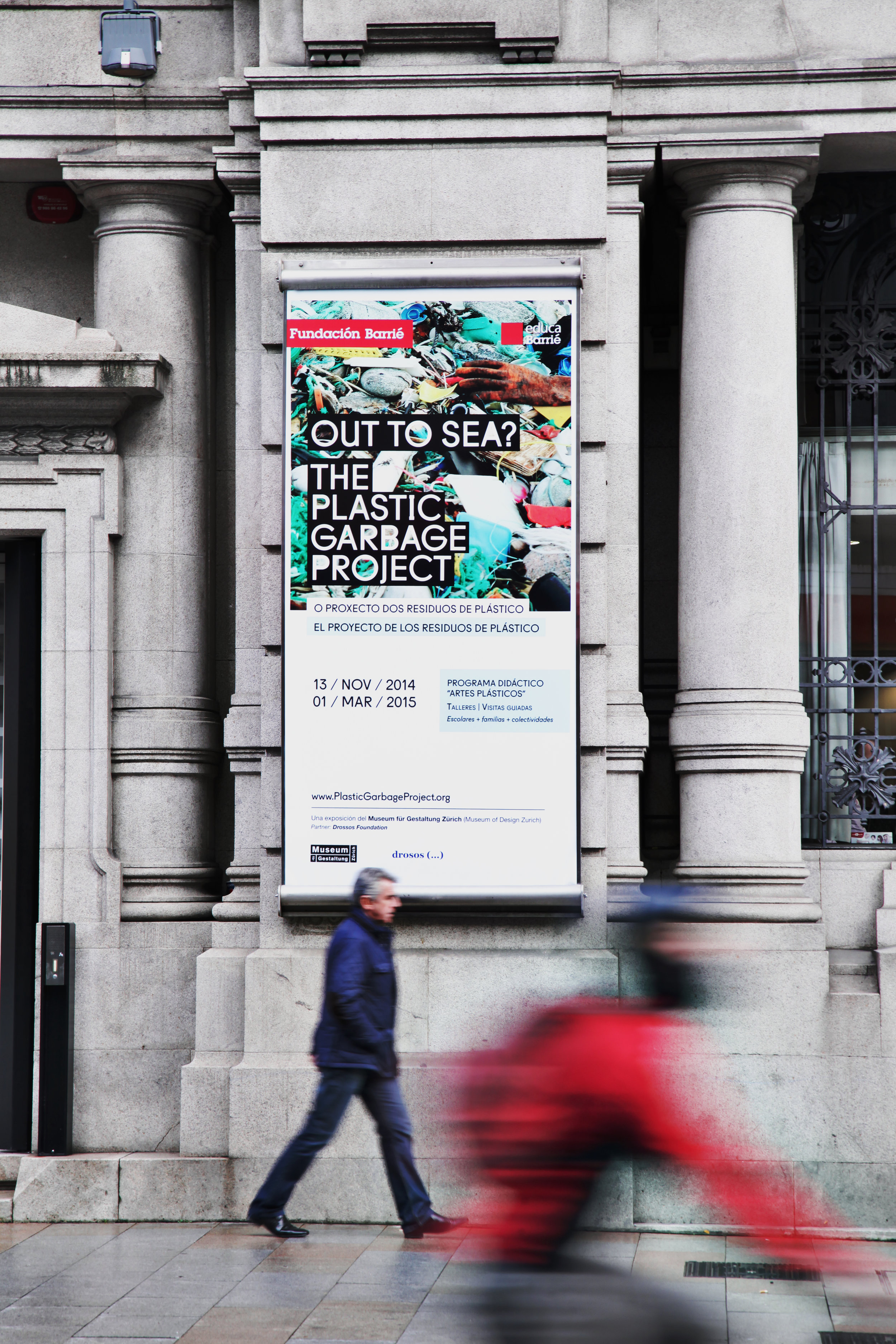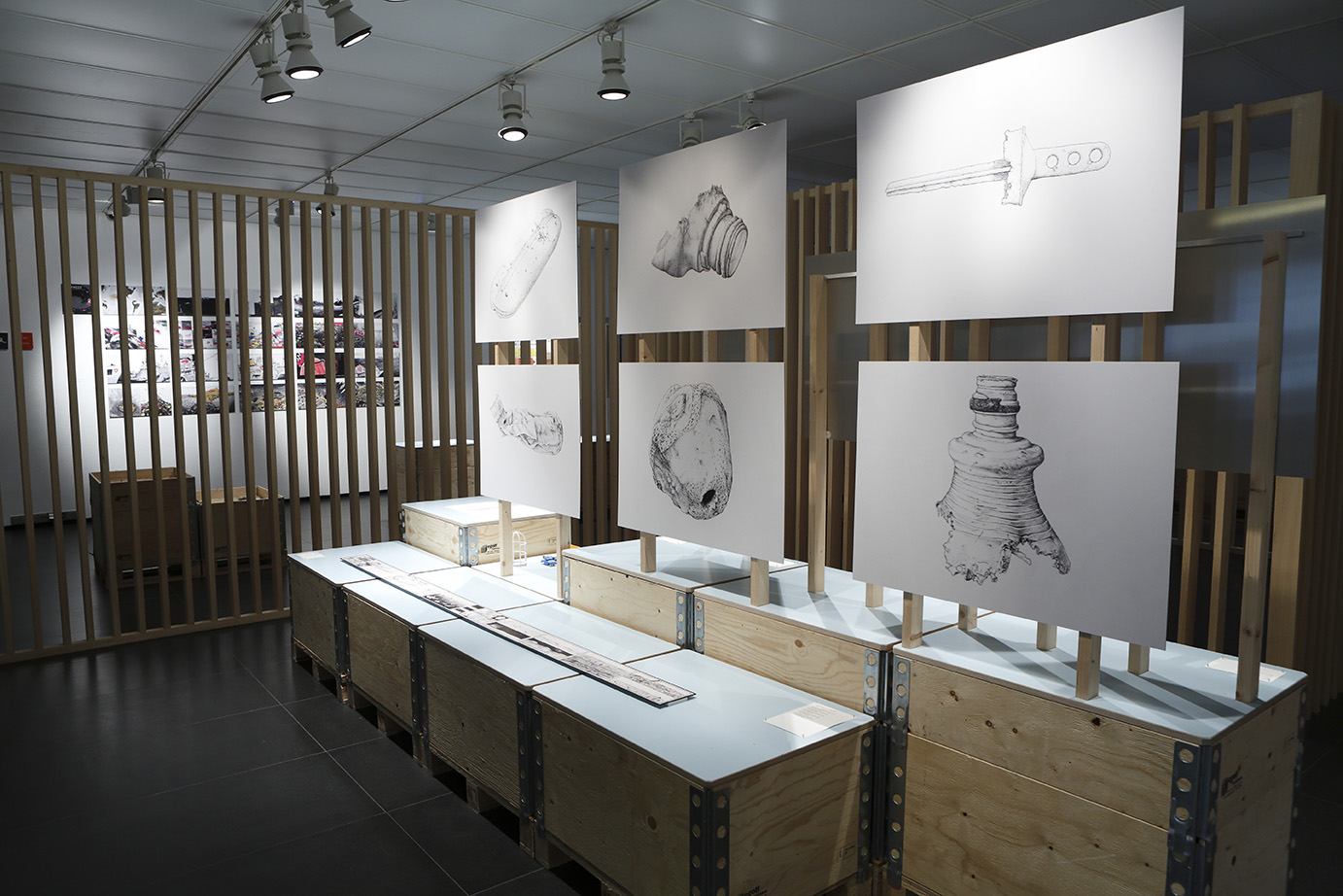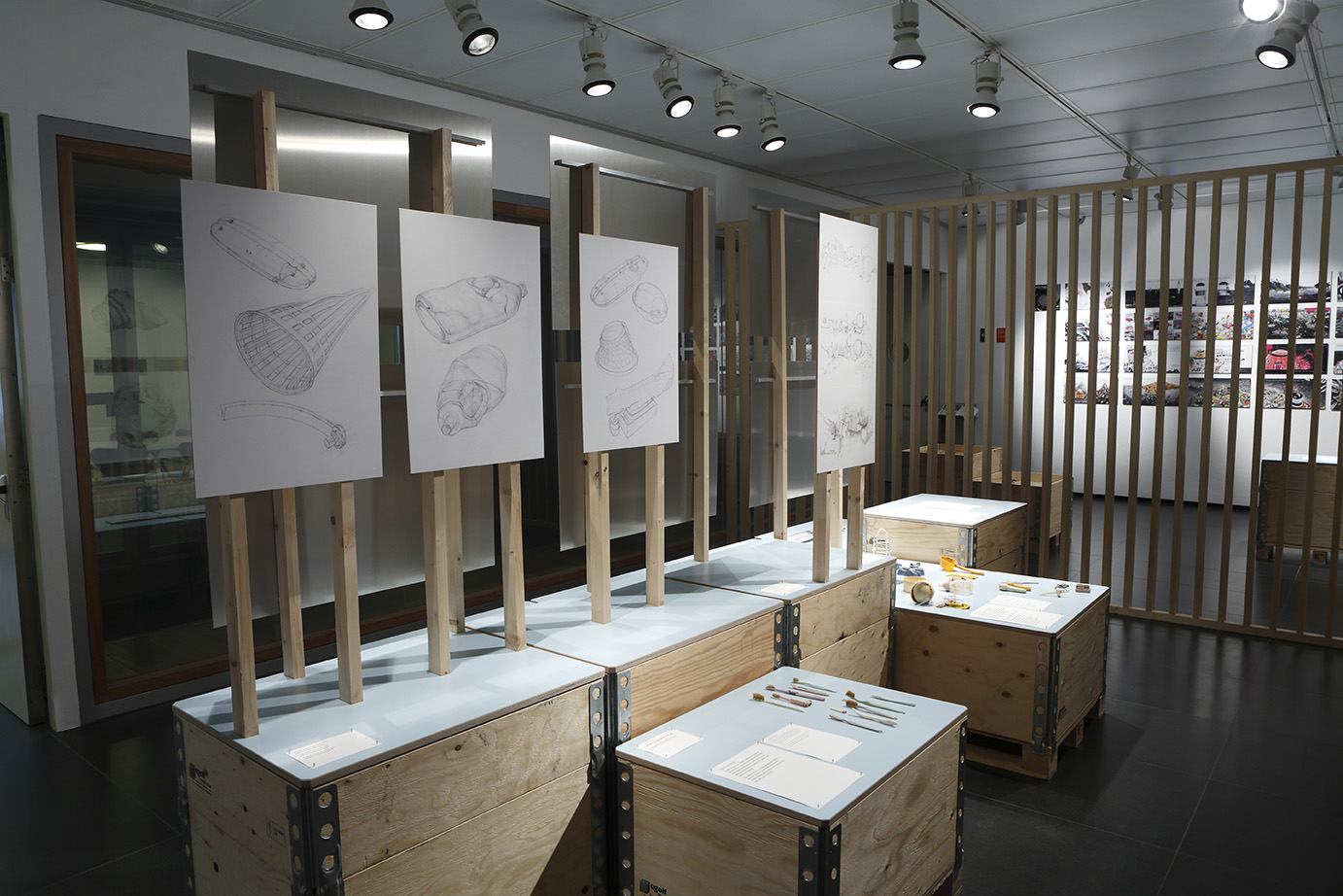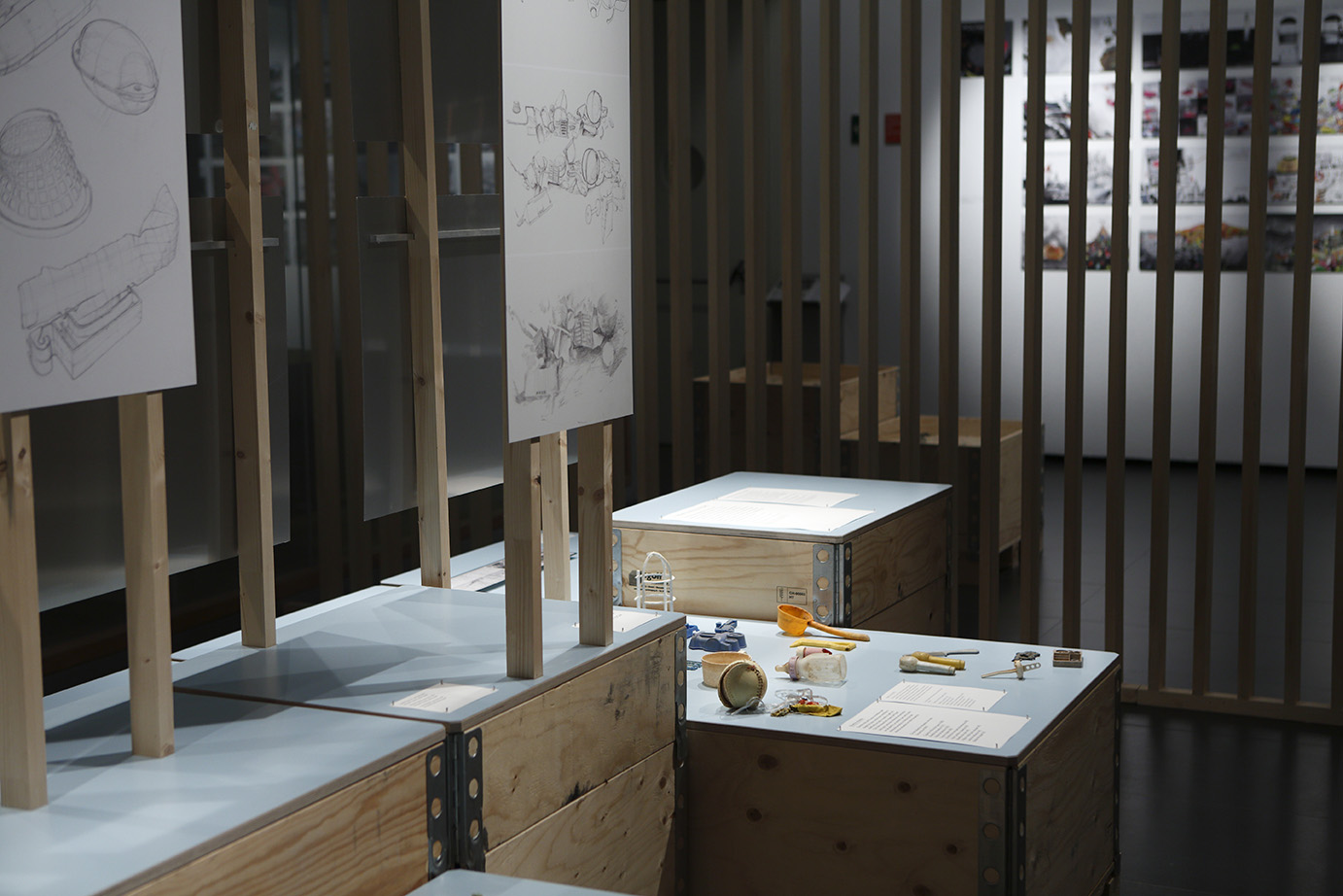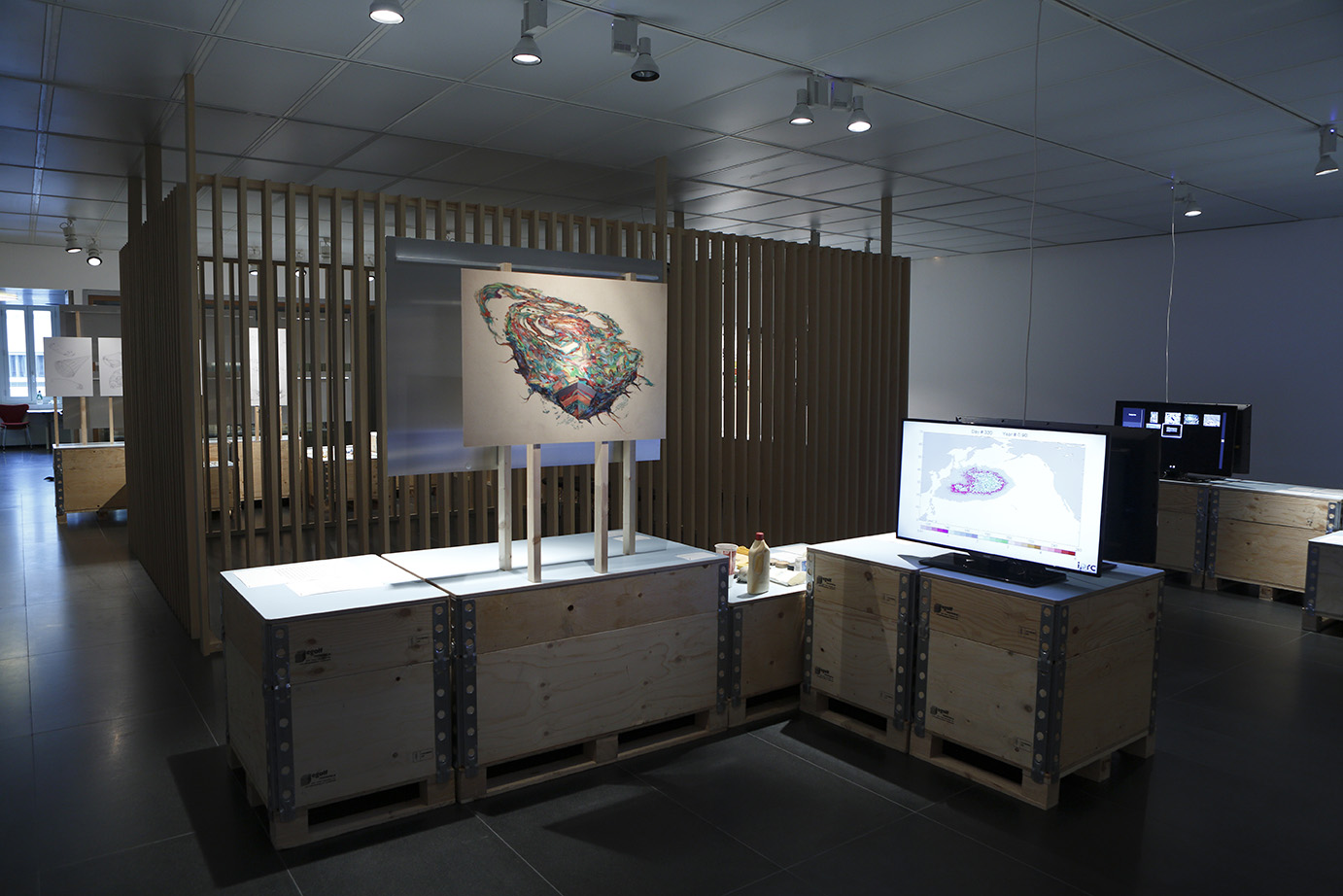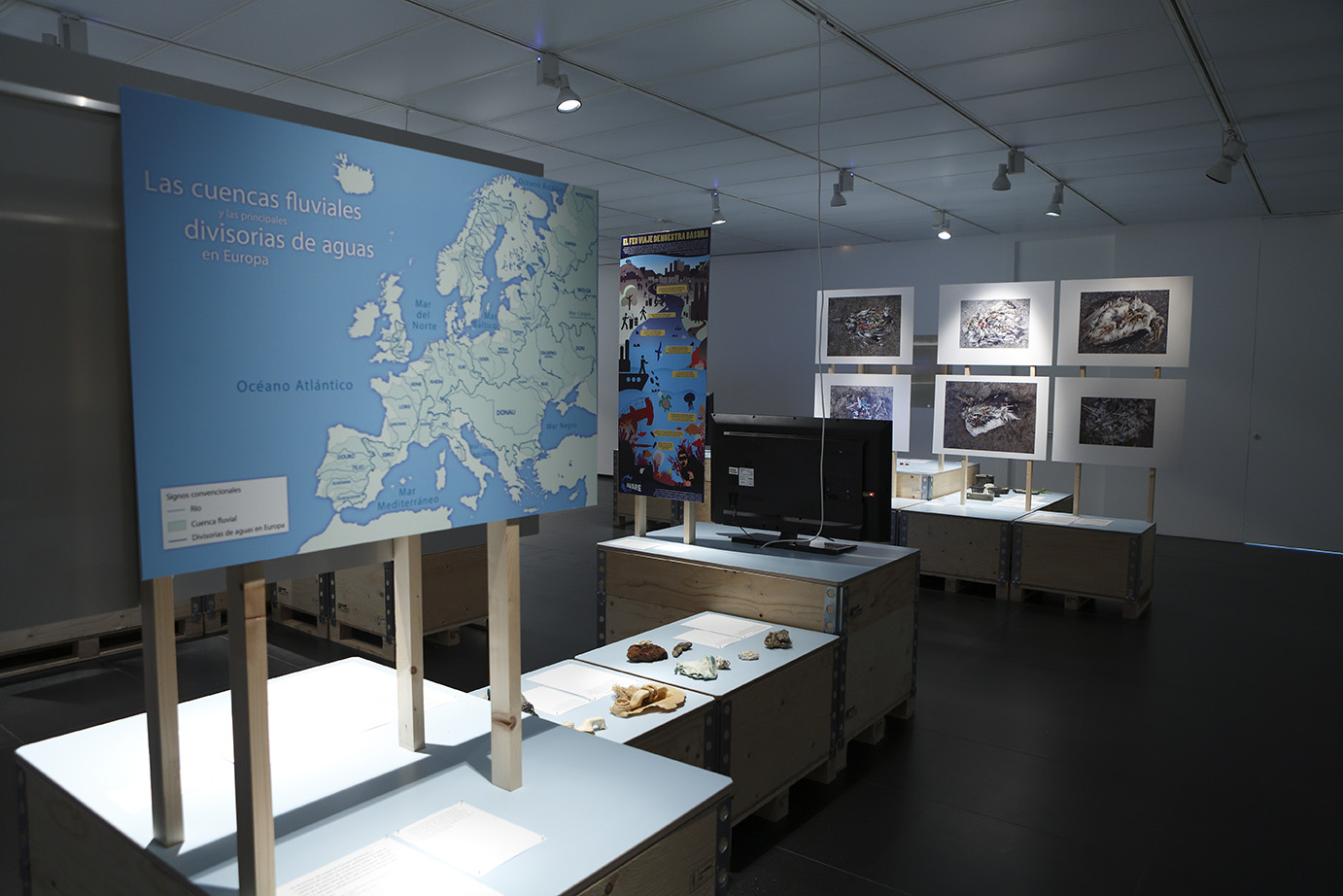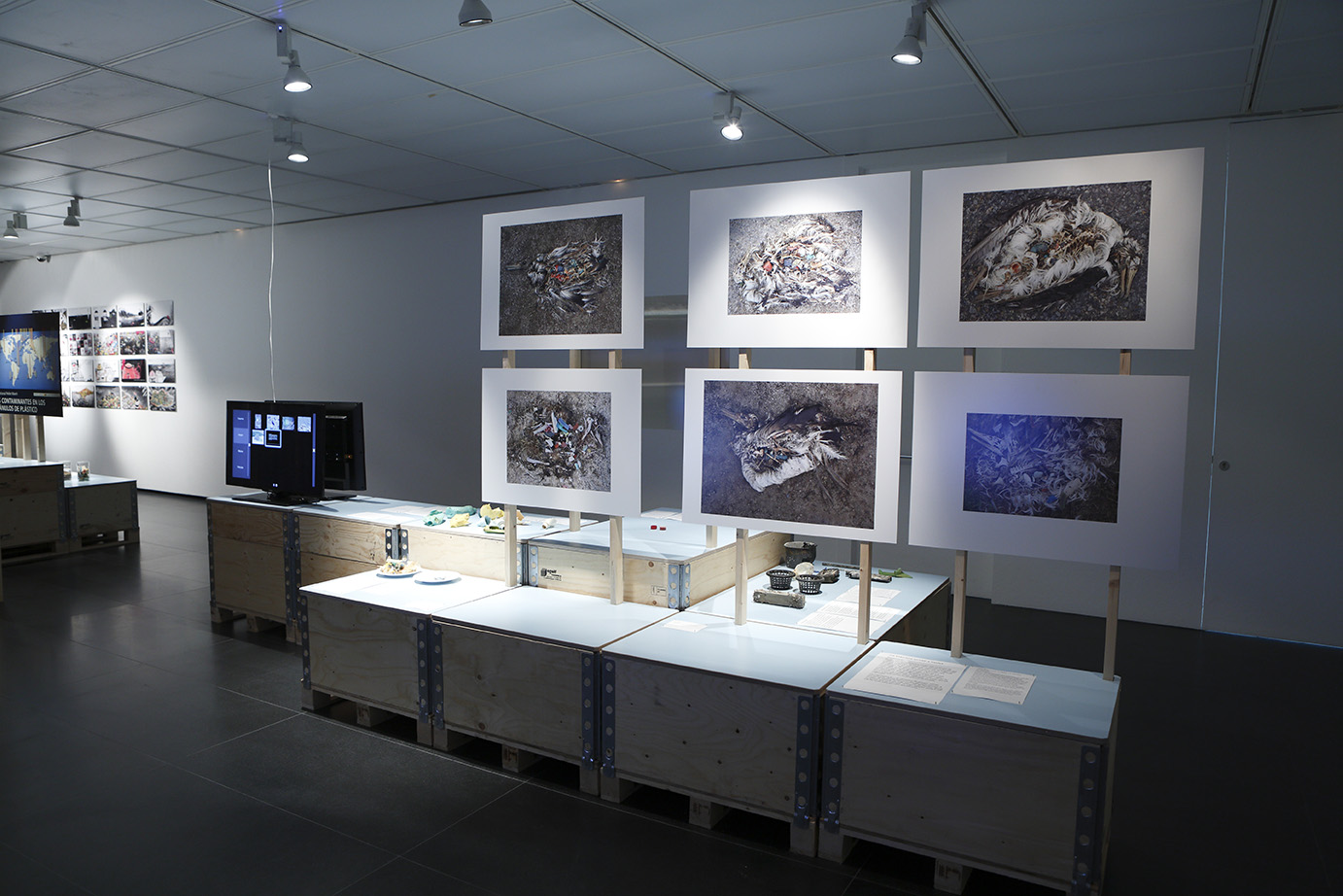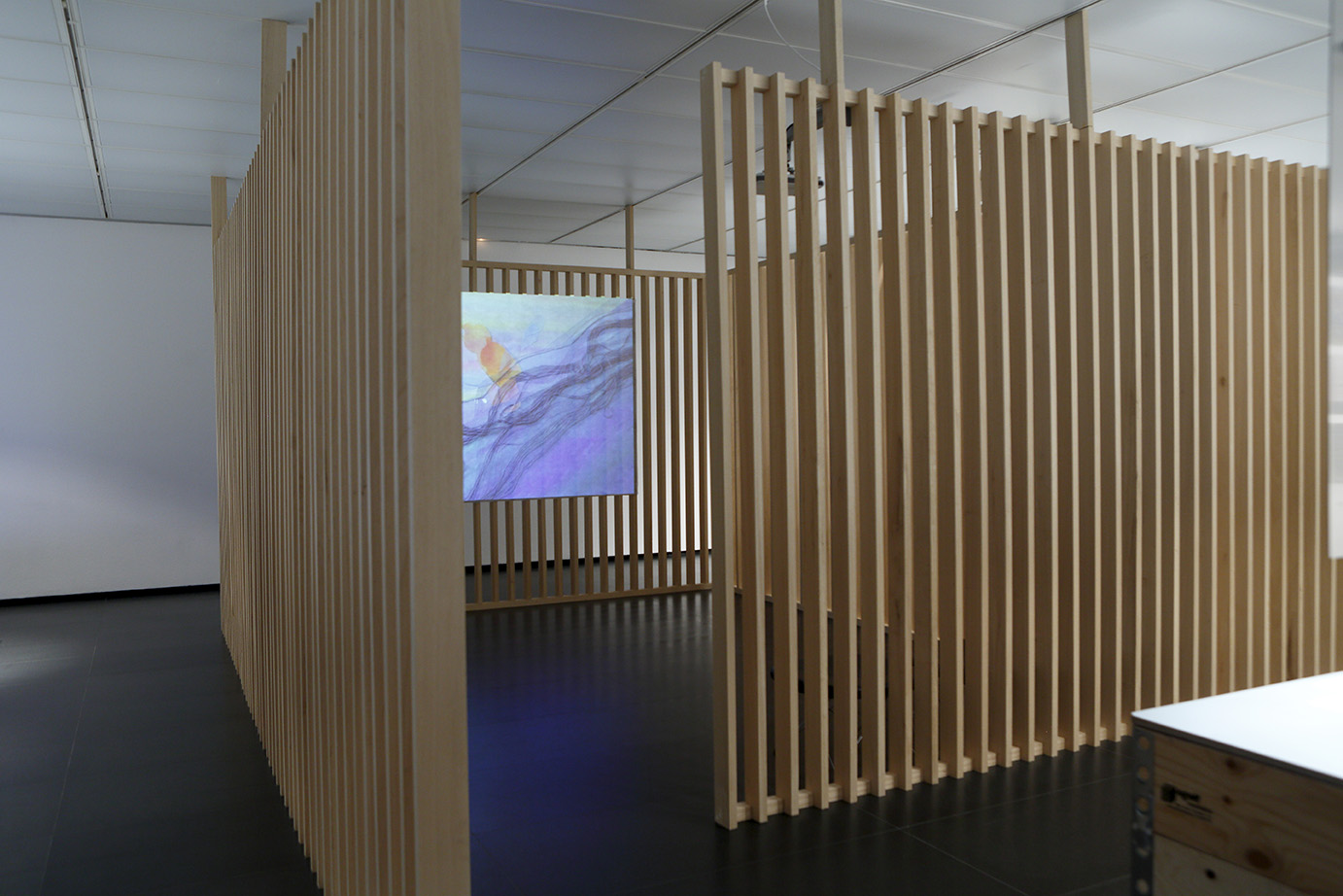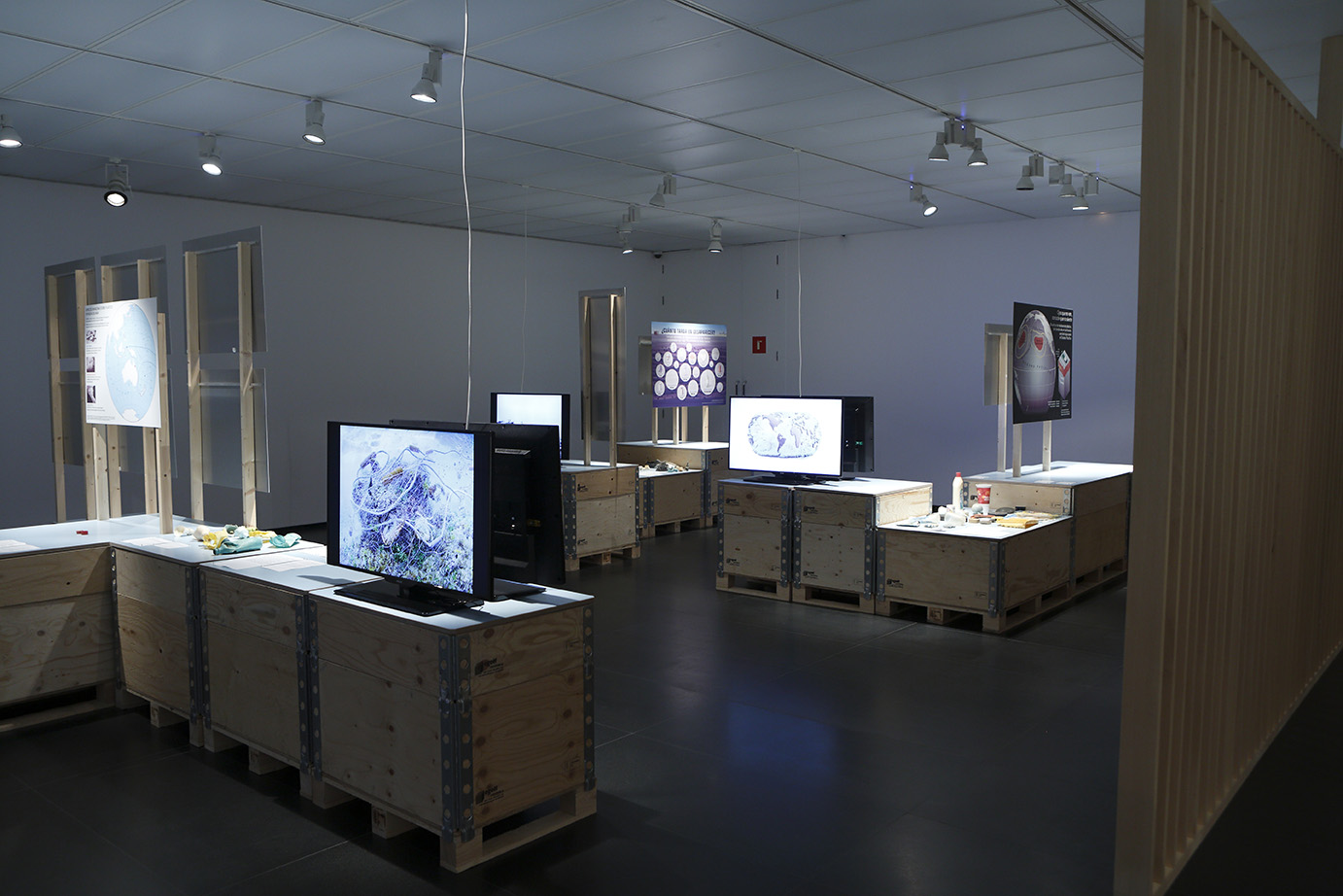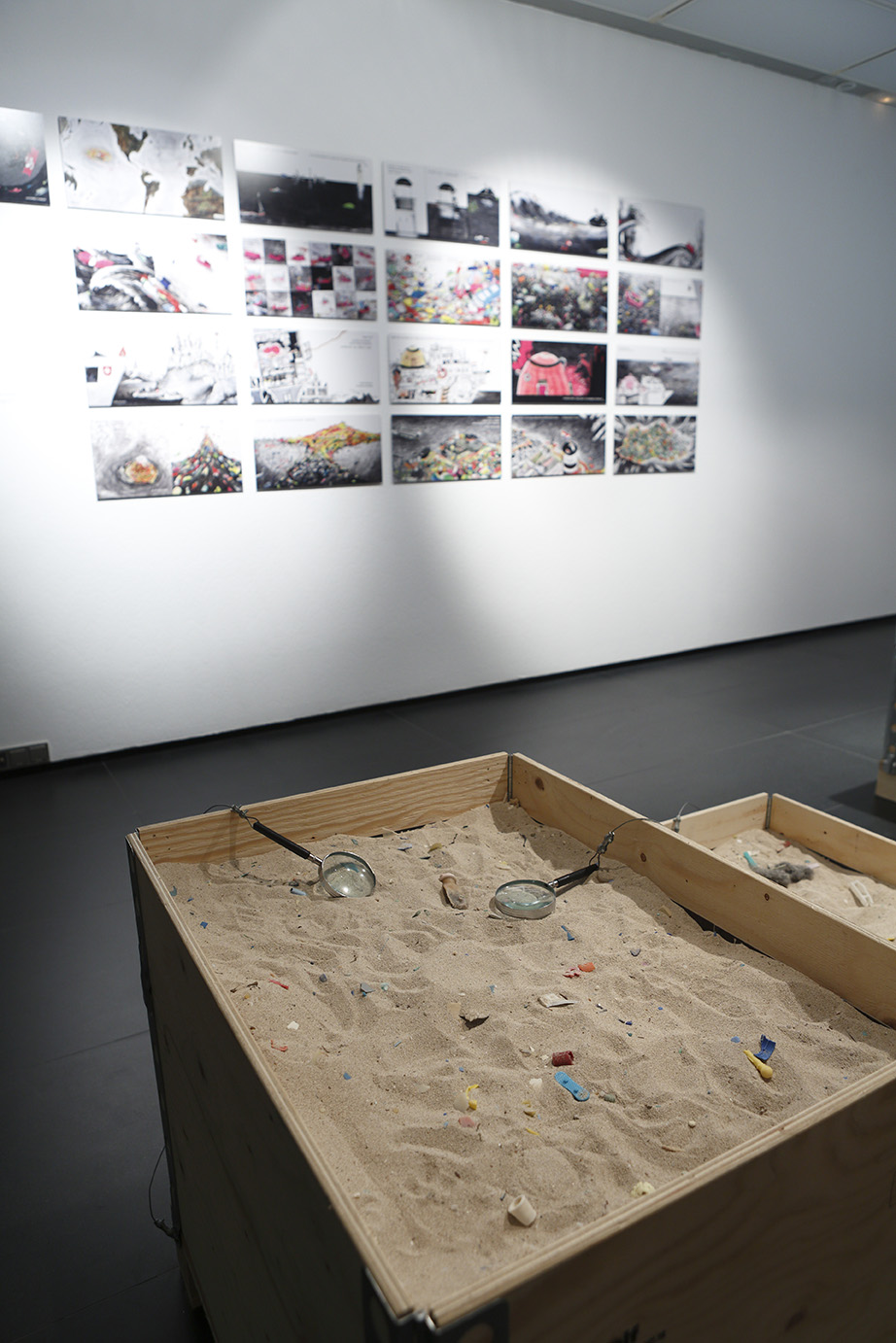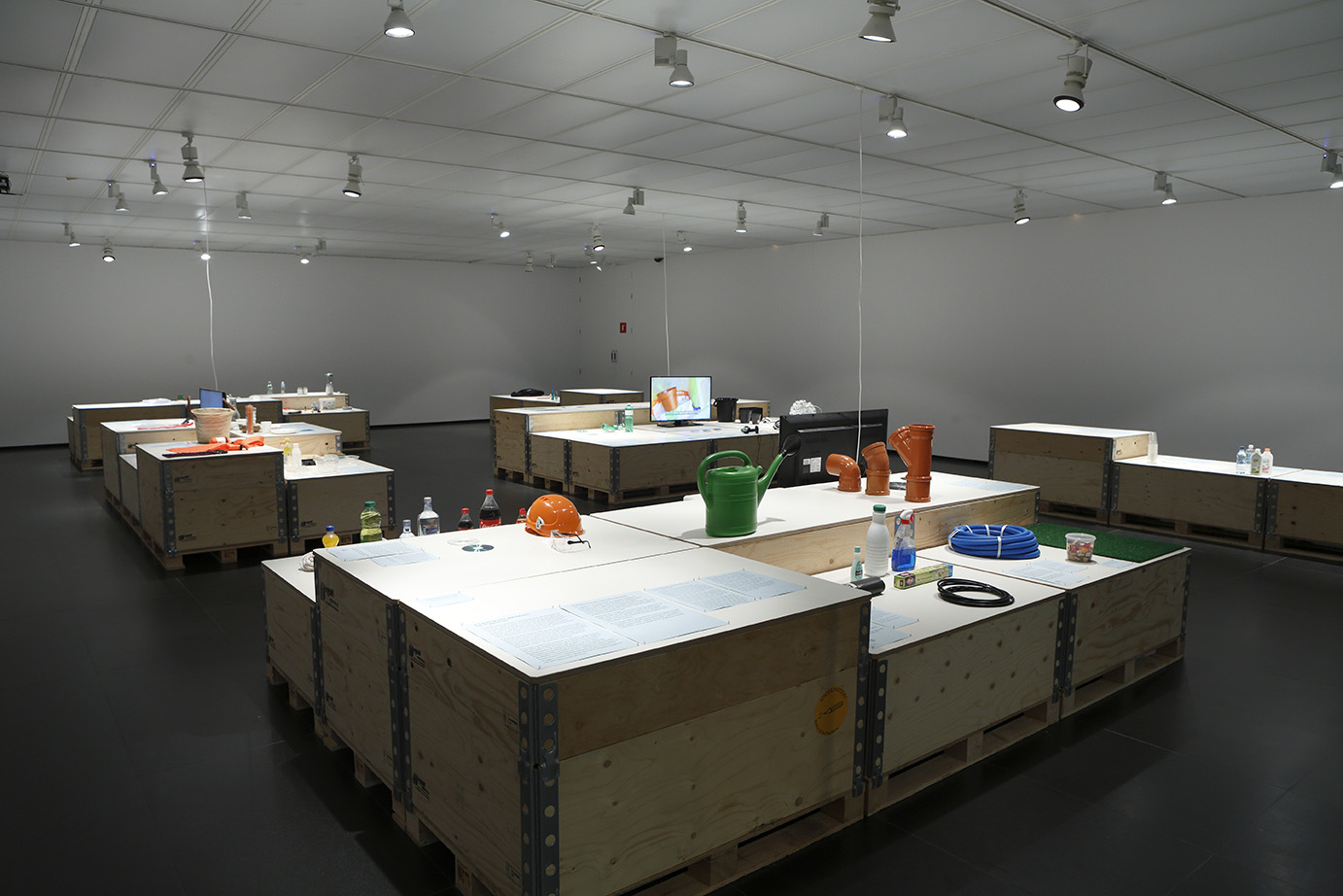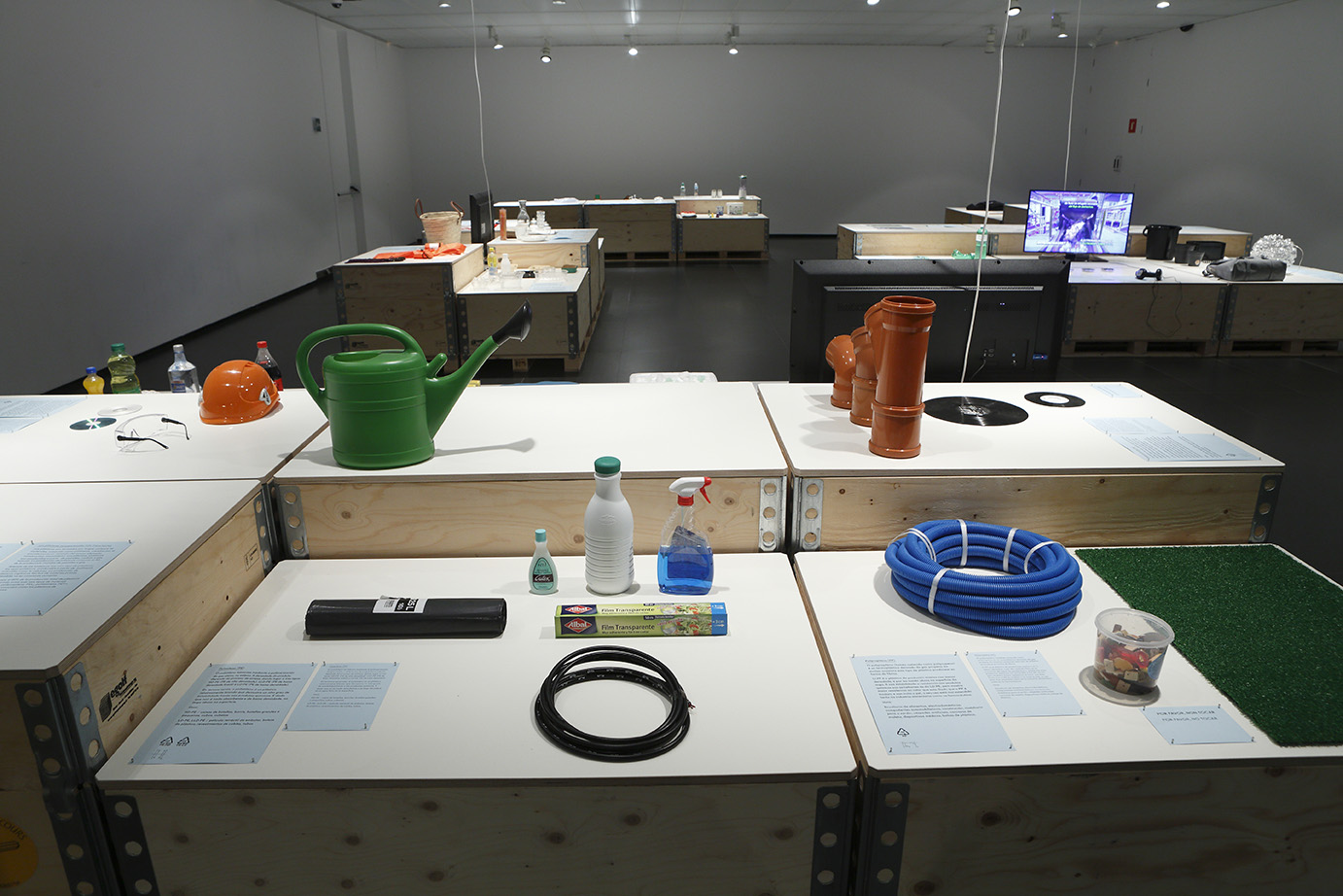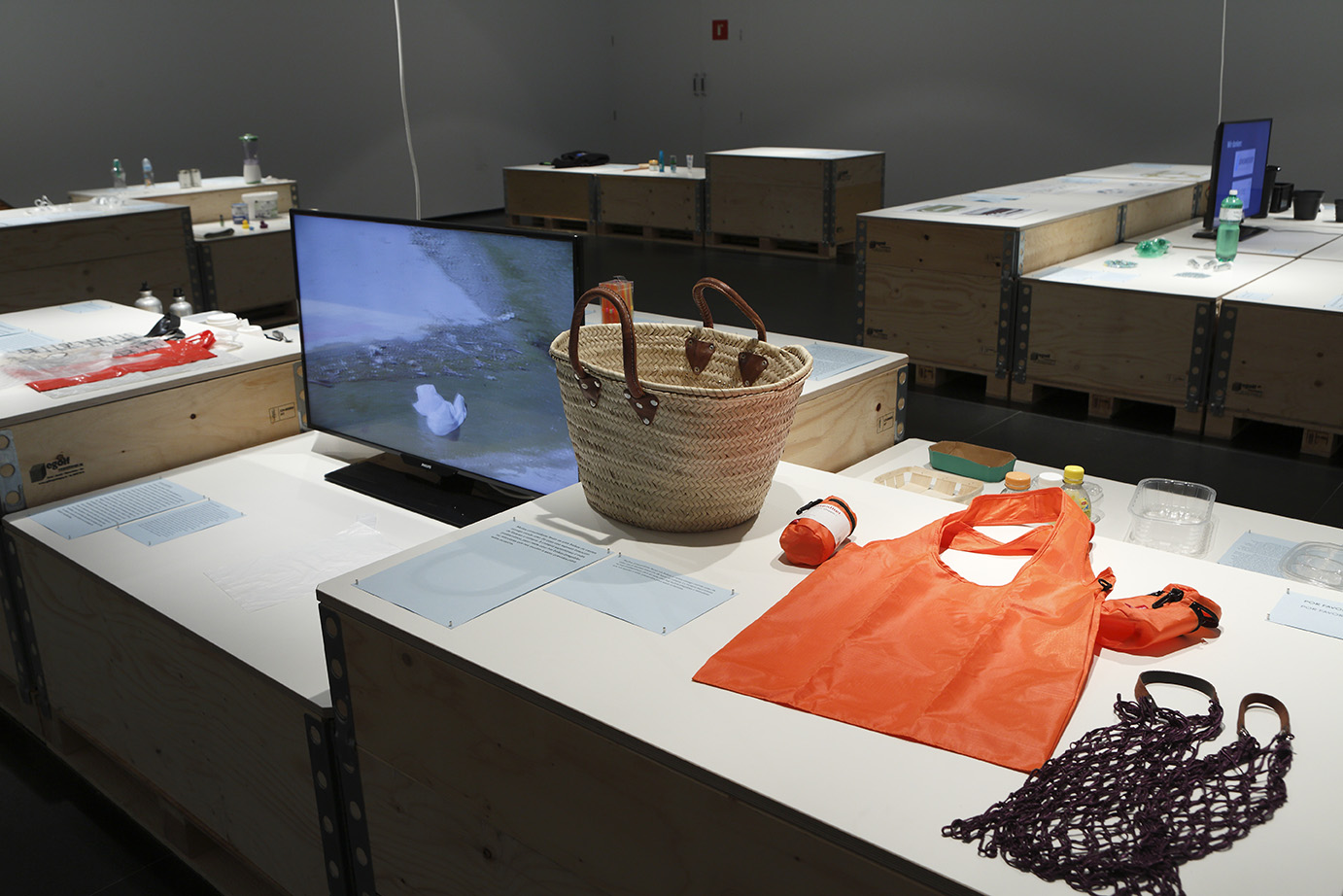Fundación Barrié
Vigo, spain
14 November 2014 – 1 March 2015
Silently, relentlessly, man’s indiscriminate action has led to the accumulation in our seas and oceans of vast amounts of plastic waste that travel the globe along marine currents, breaking up over time into different sized particles and provoking irreversible changes to both our marine ecosystem and food chain.
Since its creation in 1966, the Fundación Barrié has demonstrated its firm commitment to the conservation of our material and non-material cultural heritage through the promotion and financial support of a wide range of projects.
In "Out to Sea? The Plastic Garbage Project" at the foundation’s premises in Vigo, we have been guided by our concern for future generations’ continued enjoyment of the sea, at a time of social and economic growth in Galicia and where we boast some 1.500 km of shoreline.
In this environmental conservation project, which the Fundación Barrié is presenting in Spain for the first time, we attempt to raise awareness in society, amongst the young in particular, of the pressing need to stop polluting our seas with plastic waste.
Objective
The chief emphases of “Out to Sea? The Plastic Garbage Project” are the tremendous amounts of plastic waste which make their way into the oceans every day, the consequences of the pollution for nature and mankind, and various approaches to solving this global problem. The exhibition will take a critical look at the negative aspects of mass consumption and the misconceptions about availability of resources.
First Confrontation
The great room that serves as atrium of the exhibition at Fundación Barrié is fully occupied by a great mountain of plastic waste: bags, fishing gear, cans, bottles, toys, packaging of all kinds. Everyday objects are suddenly accumulated junk which shows the dark side of mass consumption. However, it only represents a small part of the waste we produce: all this litter is the equivalent of the waste that reaches the sea in just five seconds. Is it really necessary to continue down this path?
The Use of Plastic and its Consequences
The first rooms of the exhibition tell us about the magnitude of the problem posed by the indiscriminate use of plastic. Plastic is a cheap material, easy to produce and highly effective. It may even be aesthetically appealing. But what happens when a plastic object ends its life cycle? Over time, a huge amount of plastic waste was accumulated in the oceans and this causes irreversible changes to both nature and the food chain. More than 6.4 million tons of plastic waste come to our environment each year and, ultimately, to our seas, which are gradually being transformed into a plastic minestrone. Currently, no single square kilometer of sea water that is free of plastic pieces.
Damages to the Environment and Health
The exhibition shows the different ways in which these waste affects living beings. Birds, turtles and other marine animals mistake plastic pieces for food and suffer from serious digestive diseases that could cause their death. Some species of insects lay their eggs in plastic objects that can be transported by currents across great distances to very different ecosystems and can cause ecological imbalances with unpredictable consequences. Plastic items are fragmented into increasingly smaller pieces that reach the food chain: at the end of the process we will find these residues in the food on our plates, with alarming consequences for our health. Seawater degrades plastic objects, but they leave a gloomy footprint because chemical molecules remain and cause sterility between fish and human... There is an endless injury list.
Farsightedness
But “Out to Sea?” also wants to show that this catastrophe is not irreversible: plastic does not have to be inevitably harmful. There are practices to minimize damage and reduce risks. The point is how to make a responsible use of a material with innumerable qualities.
Recycling
Recycling is certainly the first step to implement. Almost all plastics are reusable and the exhibition shows different examples of recycling processes and allows the audience to assess the efficiency of each one. But even in advanced societies with efficient systems of waste management, only a quarter of plastic waste, according to the most optimistic estimates, are recycled.
A reasonable Use
We need, therefore, take a step further and reduce the use of this material to prevent unreasonable use. Plastic bags, for example, have a negligible performance if we take into account its production process: to produce and to distribute one of these bags can last two years, while consumers use them between fifteen and sixty minutes. When a plastic product is made, it would be necessary to think about their life cycle and to adopt measures to prevent this kind of economic and environmental imbalance. The exhibition provides some alternative strategies to think about.
A "Space to Think"
At the end of the exhibition, the Fundación Barrié has created a "Space to Think" in which the general problem of plastic garbage will be linked with the environment of the audience. Located in Galicia, a community with more than 1,500 km of coastline, the city of Vigo is an international leader in oceanographic and marine biology studies. In this space, therefore, we will learn about projects and concrete actions that will link the general problems with the local reality. This web will be part of that Space to Think.
Education
The exhibition will be accompanied by an extensive educational program for children, teenagers and adults. Workshops and discussion forums which scientists, designers and environmentalists involved will provide the impetus for a more rational action and sensitize visitors about the challenge of plastic waste.
